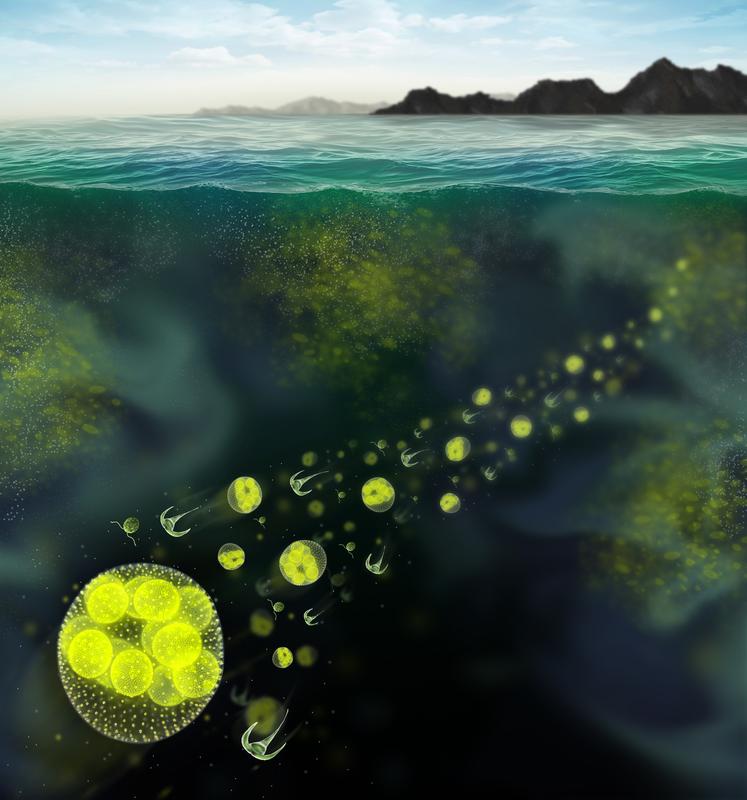When the sea blossoms

Artist's rendition of phytoplankton species forming a patchy distribution Marco Mazza MPIDS
If the sea turns red or green, phytoplankton is at work – countless microscopic algae, which use sunlight to generate energy and cause coloration.
Phytoplankton is the basis of the marine food web and produces 50 percent or more of the oxygen in the atmosphere.
Recent observations show that swimming phytoplankton species in oceans and lakes have an uneven spatial distribution down to the millimeter range.
This is surprising in that it precludes the intuitive expectation that the mild turbulence that are ubiquitous in waters will mix and disperse the microorganisms relatively equally.
“In our work, we found that mild turbulence subtly interacts with the swimming properties of the phytoplankton and thus lead to spatially uneven distributions of the cells,” says Rebekka Breier as the lead author of the Göttingen study.
When the typical turbulence timescale approximates the scales of interaction between the phytoplankton cells, small dense accumulations of motile cells are formed on millimeter-size scales.
“Our work paves the way to understanding how patchiness of phytoplankton grows. This will probably allow us to make better predictions as to when algal blooms behave. This is also interesting for the fishing industry, as the algal blooms cause immense economic damage to them, “says Marco Mazza, who is responsible for the project.
Media Contact
More Information:
http://www.ds.mpg.de/All latest news from the category: Life Sciences and Chemistry
Articles and reports from the Life Sciences and chemistry area deal with applied and basic research into modern biology, chemistry and human medicine.
Valuable information can be found on a range of life sciences fields including bacteriology, biochemistry, bionics, bioinformatics, biophysics, biotechnology, genetics, geobotany, human biology, marine biology, microbiology, molecular biology, cellular biology, zoology, bioinorganic chemistry, microchemistry and environmental chemistry.
Newest articles

Microscopic basis of a new form of quantum magnetism
Not all magnets are the same. When we think of magnetism, we often think of magnets that stick to a refrigerator’s door. For these types of magnets, the electronic interactions…

An epigenome editing toolkit to dissect the mechanisms of gene regulation
A study from the Hackett group at EMBL Rome led to the development of a powerful epigenetic editing technology, which unlocks the ability to precisely program chromatin modifications. Understanding how…

NASA selects UF mission to better track the Earth’s water and ice
NASA has selected a team of University of Florida aerospace engineers to pursue a groundbreaking $12 million mission aimed at improving the way we track changes in Earth’s structures, such…





















